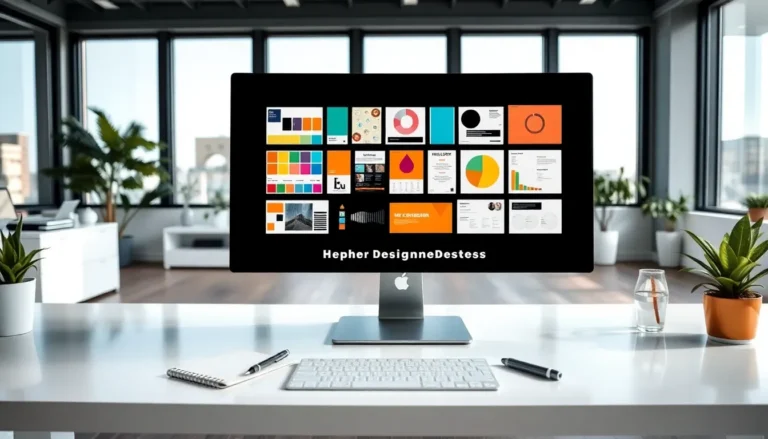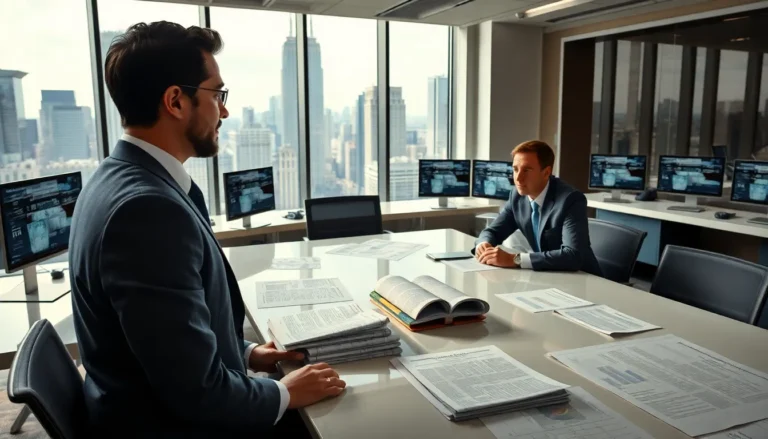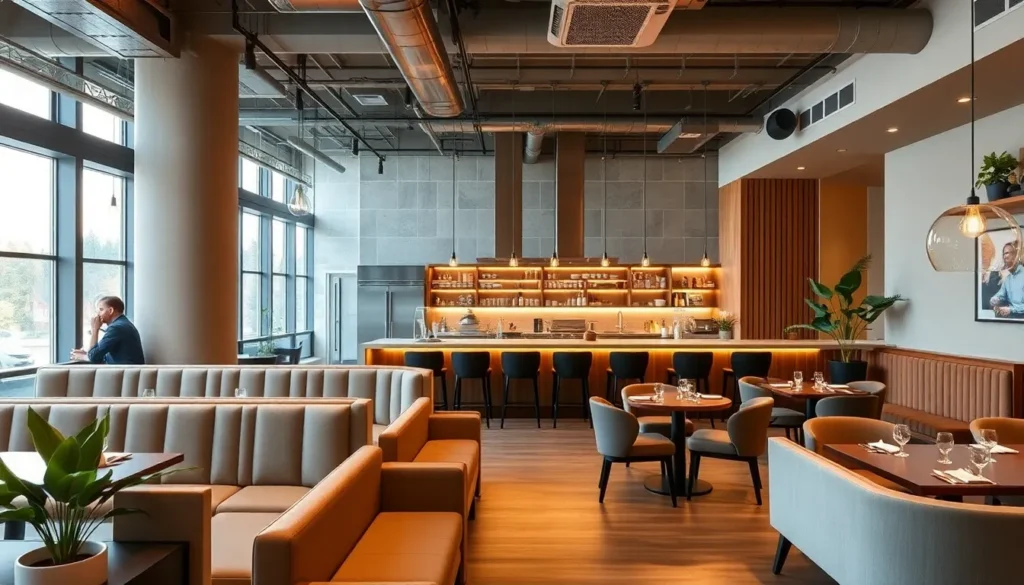Table of Contents
ToggleWhen it comes to eating out, the experience goes beyond the food. Restaurant design plays a crucial role in shaping a diner’s encounter, setting the stage for great meals and memorable moments. Think about it: would you really enjoy your pasta as much in a dim, cramped space compared to a beautifully lit, welcoming ambiance? Exactly. In today’s competitive market, having an innovative, well-thought-out design can be the difference between gaining lifelong customers and attracting just another faceless crowd. Let’s jump into the vibrant world of restaurant design concepts and explore how they enhance the dining experience.
Understanding the Importance of Restaurant Design

A restaurant’s design can communicate its brand identity and values effectively. When a potential customer walks past a restaurant, it’s often the design that draws them in, an architectural statement that promises appetizing experiences inside. Factors like layout, lighting, and color scheme not only impact ambiance but can influence customer behavior too. Studies show that a well-designed space encourages customers to stay longer and order more, making design an essential element for profitability. Besides, in an age where social media reigns supreme, a visually appealing design encourages photogenic moments, promoting the restaurant organically via social shares. It’s safe to say, investing in good design is not just an aesthetic choice, it’s a smart business strategy.
Key Elements of Effective Restaurant Design
There are several elements that contribute to effective restaurant design, each playing a role in creating an inviting atmosphere.
Layout
The layout determines how guests navigate through the space. An efficient arrangement of tables, bars, and service stations can streamline service, enhance comfort, and foster better interaction among diners.
Lighting
The right lighting sets the mood. It can transform any meal into an event. Soft ambient lights can create intimacy, while bright lights can energize diners.
Color Scheme
Color influences emotions. Warm tones like reds and yellows can stimulate appetite, while blues and greens often have a calming effect. Choosing the right palette can enhance the overall dining experience.
Furniture
Comfortable seating is a must. Whether it’s plush booths or sleek modern chairs, the furniture should complement the restaurant style while providing comfort.
Acoustics
A noisy environment can ruin a dining experience. Thoughtful acoustics that allow for conversation without excessive noise can encourage guests to relax and linger a bit longer.
Popular Restaurant Design Concepts
Diverse design concepts cater to different culinary themes and customer experiences:
Open Kitchen Design
This trend invites diners to witness the cooking process, fostering a sense of transparency and engagement. Customers enjoy the smell of fresh ingredients while witnessing culinary magic in real time.
Rustic Farmhouse
Drawing inspiration from countryside aesthetics, this concept features reclaimed wood, warm colors, and vintage décor, appealing to a desire for authenticity. It’s perfect for establishments aiming for a homey feel.
Minimalist
Emphasizing simplicity and functionality, minimalist design favors clean lines and uncluttered spaces. This concept is ideal for modern cafes that appeal to a more sophisticated clientele.
Themed Restaurants
From underwater adventures to retro diners, themed setups can create a unique dining atmosphere that captivates the imagination. These restaurants often become destinations rather than mere eateries.
Incorporating Technology into Restaurant Design
Technology continues to revolutionize the dining sector, and incorporating it into restaurant design can enhance guest experiences significantly.
Interactive Tablets
Placing tablets at tables allows guests to browse menus, customize orders, and even pay bills, all at their convenience. This not only speeds up service but also adds a modern twist to dining.
Smart Lighting
Automated lighting systems can adjust based on time of day or occupancy, enhancing energy efficiency while creating a suitable ambiance. The ability to change lighting through smart technology can keep the atmosphere fresh.
Online Ordering Systems
A seamless integration of online ordering offers versatility, allowing customers to choose between dining in or taking out with just a few clicks. Great design should help these services without detracting from the restaurant’s overall aesthetic.
How to Adapt Designs for Different Dining Experiences
Different dining experiences require tailored designs to enhance customer satisfaction. Here’s how to adapt:
Fine Dining
A formal setup with elegant décor and soft lighting invites patrons to linger over meals. Spacious layouts offer privacy, while upscale finishes add luxury.
Casual Dining
For this environment, comfort reigns supreme. Choose flexible seating arrangements that accommodate both large groups and couples, creating an inviting atmosphere for all demographics.
Fast Casual
This design must promote efficiency without sacrificing comfort. Open layouts with quick-access ordering sections help help a smoother flow. Minimalist aesthetics paired with vibrant colors can energize the space while still catering to those on the go.
Sustainability in Restaurant Design
Sustainability is no longer just a trend: it’s a necessity. Designing a sustainable restaurant involves making eco-friendly choices without compromising aesthetic appeal.
Sustainable Materials
Using reclaimed wood, bamboo, or recycled metals showcases commitment to the environment. These materials not only reduce carbon footprints but can also create visually striking spaces.
Energy Efficiency
Incorporating energy-efficient appliances and smart systems can significantly reduce operational costs over time. Also, good insulation and eco-friendly technologies can minimize energy consumption.
Biophilic Design
Bringing nature indoors with plants, natural light, and earthy textures can enhance customer well-being. This kind of design can soothe guests, making their experience more pleasurable.







